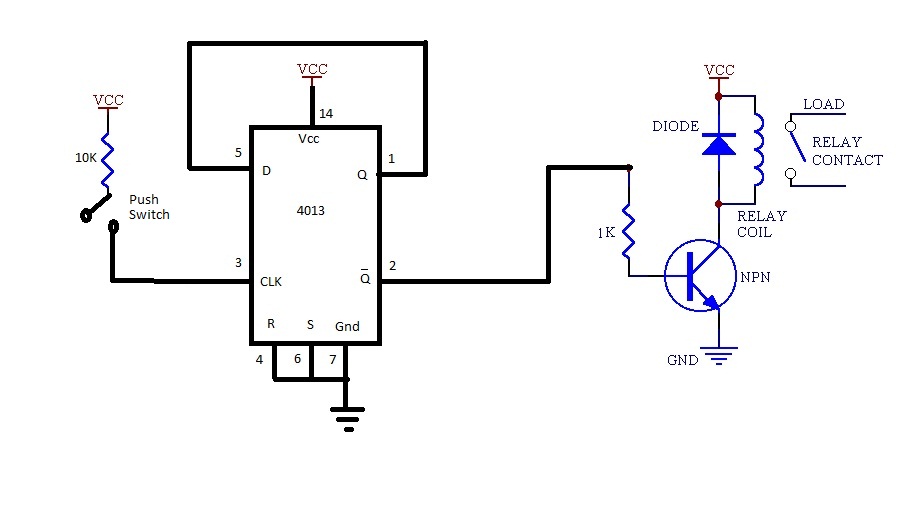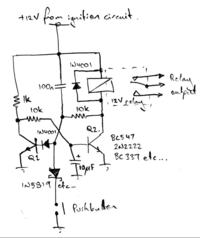owais131
Newbie level 5
- Joined
- Mar 3, 2008
- Messages
- 8
- Helped
- 0
- Reputation
- 0
- Reaction score
- 0
- Trophy points
- 1,281
- Location
- Karachi, Pakistan
- Activity points
- 1,340
Dear Seniors and Respected Members,
I want your precious time to help me in a simple circuit. I need to make Arm/Disarm Circuit for a vehicle (12V DC). The circuit will work as follows:
1. When vehicles ignition is ON, the Output should be enabled and vehicle is killed.
2. When disarm button is pressed, the output should be released and vehicle is mobilized.
3. When ignition is turned OFF, the output should be enabled again. (this is not required but if this is possible that it is good)
Condition:
The disarm button should take negative (Ground) as input to trigger the circuit, as this button is common to another circuit that needs a ground input too.
I have searched the forum and found some similar circuit , see below:
link https://www.edaboard.com/threads/202518/

But it takes positive 12 volts as an input. I need a ground (neg) as input. Thanks in Advance.
I want your precious time to help me in a simple circuit. I need to make Arm/Disarm Circuit for a vehicle (12V DC). The circuit will work as follows:
1. When vehicles ignition is ON, the Output should be enabled and vehicle is killed.
2. When disarm button is pressed, the output should be released and vehicle is mobilized.
3. When ignition is turned OFF, the output should be enabled again. (this is not required but if this is possible that it is good)
Condition:
The disarm button should take negative (Ground) as input to trigger the circuit, as this button is common to another circuit that needs a ground input too.
I have searched the forum and found some similar circuit , see below:
link https://www.edaboard.com/threads/202518/

But it takes positive 12 volts as an input. I need a ground (neg) as input. Thanks in Advance.
